
How would your recruitment strategy change if you knew precisely what kinds of emails, texts, social media posts, and web pages generated the most engagement, drove the most inquiries, and led to the most enrollments?
For starters, you could better delegate time and resources to the tactics that really work, leaving you more time to fix the ones that don’t. Over time, you’d develop a highly effective online recruitment strategy that generates more inquiries and applications without necessarily increasing your budget.
That’s what marketing automation measurement can do for schools. By analyzing a wide range of highly detailed reports, your school can gain the in-depth insight it needs to make the most out of its recruitment efforts.

What is Marketing Automation for Higher Education?
Marketing automation is to admissions staff what a calculator is to mathematicians: a versatile tool that enables you to complete your job more efficiently and accurately. Here are a few areas of digital marketing that marketing automation can help with:

Yes, your school’s admissions team can send emails, create landing pages, and view reports on its own – just as a mathematician doesn’t necessarily need a calculator to add and subtract.
But marketing automation takes these tasks to the next level. Not only is it much easier to complete said tasks, but you’ll be able to create more personalized and complex campaigns – as well as view reports with a level of detail you won’t find anywhere else.
Since marketing automation centralizes all of your recruitment activities, not only will you gain insight into each element of your digital marketing strategy – you’ll also be able to see how each component contributes to your overall lead flow.
Website Measurements for Schools
Most marketing automation (MA) platforms connect to your school’s website, providing you with a wealth of insight into your overall web traffic, as well as data related to key lead generating web elements.
On a surface level, many marketing automation platforms thus offer statistics on your website activity such as the number of forms and landing pages you’ve created, which can help you visualize the different lead generating resources your school has available on its site.
In addition, some marketing automation programs also provide insight into everything that happens when prospects visit said landing pages and submit said forms.
Example: In HubSpot’s Marketing Hub, schools can assess a variety of landing page metrics such as page views, form submissions, CTA clicks, and more.

Notice how, in the example above, the date range is indicated as Last quarter. Higher education marketing automation measurement capabilities tend to be rather flexible, allowing schools to compare data over different time periods.
In addition to landing page reports, many marketing automation platforms zero in on form submission statistics, helping schools continuously improve their lead generating efforts.
Example: From form fill rate to top form submission referrers, schools can view a wide variety of form statistics using Mautic, HEM’s custom CRM and marketing automation platform for the education sector.

Some marketing automation platforms will also give you in-depth insight into your general website performance. From general traffic data –such as which source your visitors are coming from and which country they’re located – to more niche information like what device users are viewing your site on, marketing automation will help you learn more about how users are discovering your site.
Example: This HubSpot report teaches schools more about their audience in order to better cater to them.

Certain marketing automation for education platforms also provide audience insight through engagement-based metrics, as demonstrated by these HubSpot graphs:

Keeping a close eye on your website performance is crucial considering how algorithm updates can come out of the blue and have a cataclysmic impact on your website visibility. Since today’s prospects conduct education research primarily online, it’s imperative for schools to not only avoid these disasters, but continuously grow their website traffic – and marketing automation reports can provide you with the data you need to do so.
Monitoring Higher Ed Email Performance Using Marketing Automation
It’s no question among marketers that email is one of the more cost-effective online recruitment tactics. After all, you can make up to $38 for every $1 you spend on email marketing.
That’s a 3,800% ROI – which is impressive by any standards. But what if you could multiply that number exponentially?
Marketing studies have found that optimizing your email strategy produces an astounding return on investment, and marketing automation gives you the tools you need to complete this task. For instance, companies experience an average 760% increase in revenue upon switching to segmented email campaigns, which is a feature that most marketing automation platforms offer.
While certain marketing tactics like segmentation produce universally beneficial results to companies of all kinds, marketing automation also provides you with the data you need to tailor your emails to your unique target audience. It’s the seemingly insignificant differences in subject line length, template design, and CTA copy that can make all the difference in the performance of your school’s email campaign, and marketing automation measurement can help you figure out exactly what works for your school.
Tracking Email Activity
Since practically all marketing automation platforms enable you to create email workflows – aka a series of staggered emails automatically sent out based on certain lead triggers – emails are being sent to your prospects all the time. If it wasn’t for the reporting functions that these programs offer, it would probably be pretty difficult for schools to assess which emails are being sent and to how many prospects.
Example: This Mautic report does just that, showing how many emails are being sent over a specific time frame.

Measuring Email Engagement
When it comes to email, many marketing automation programs provide general data you can view at a glance, as well as in-depth insight into particular email elements.
Example: Mautic’s monitoring capabilities exemplify both sides of this coin. In the ‘Emails” section, users can see basic statistics for each campaign that outline the number of emails sent and opened, as well as the open rate.

If you click on a particular email, you’ll see more detailed measurements – such as the number of failed and bounced emails, as well as link clicks – over a customizable time period, as shown below.
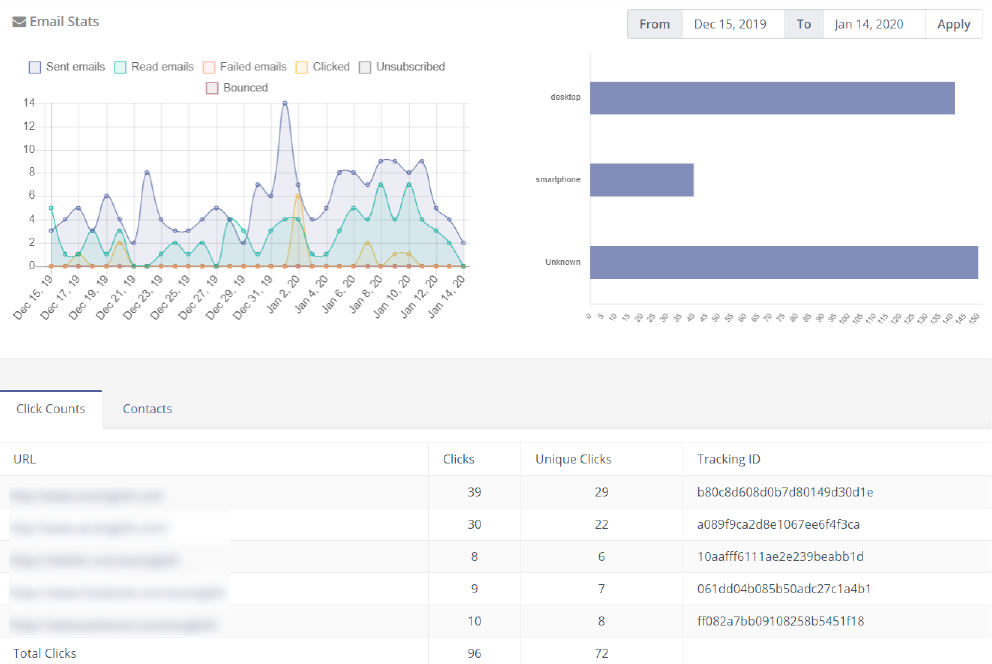
While nearly all marketing automation platforms offer some sort of email analytics, it’s important to keep in mind that the metrics they measure will differ by program. In HubSpot, for example, users can see which email provider contacts used to view a particular email, which is a helpful – although not all too common – email report:
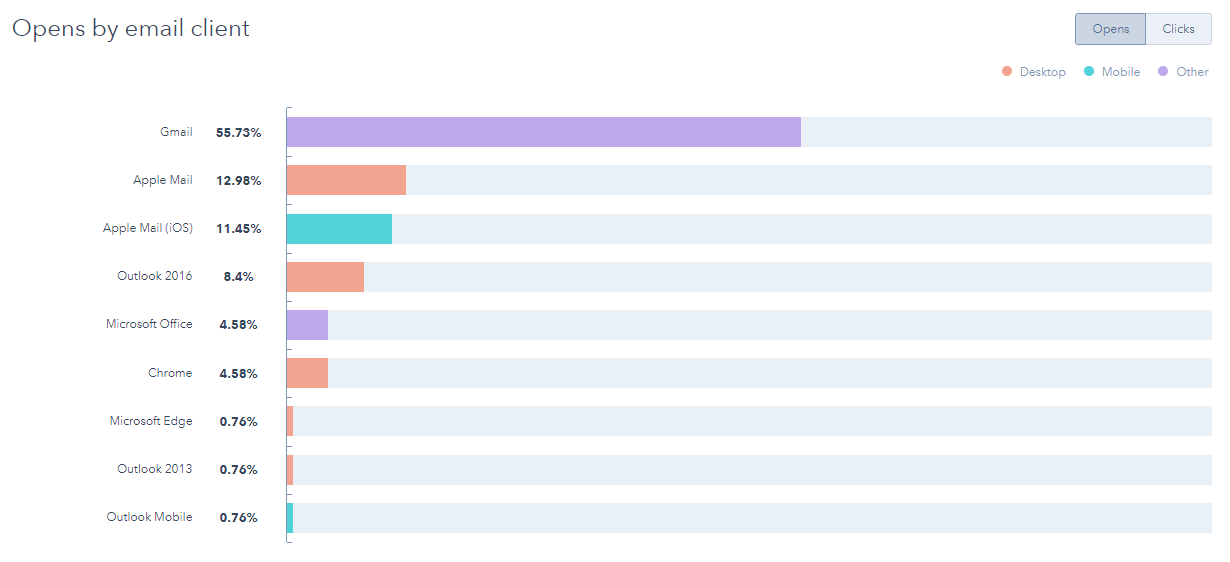
Many marketing automation platforms also enable you to analyze your email performance in relation to productivity.
Example: Mautic’s ‘Email History Report’ allows you to analyze lead engagement (aka activity) in relation to contact owner (aka activity owner), allowing members of your admissions staff to assess how their contacts are being funnelled down the enrollment pipeline through email.

Social Media Marketing Metrics for Schools
Social media is a relatively rarer component of marketing automation, as not all platforms offer social monitoring tools. However, it’s an attractive feature, and may be something you want to keep in mind when choosing a higher ed marketing automation provider for your school.
One key advantage of marketing automation and social media integration is the ability to compare data across channels. Yes, each social network offers its own analytics platform – like LinkedIn Activity and Instagram Insights – but marketing automation can help you compare the overall impact of your social media efforts across these sites.
Example: In HubSpot, you can view plenty of different social media reports related to activity (such as the number of published posts in a given period) as well as engagement (measured by clicks, shares, and more). Notice how each metric is measured by channel, but the totals are also included in the top right-hand corner of each report.
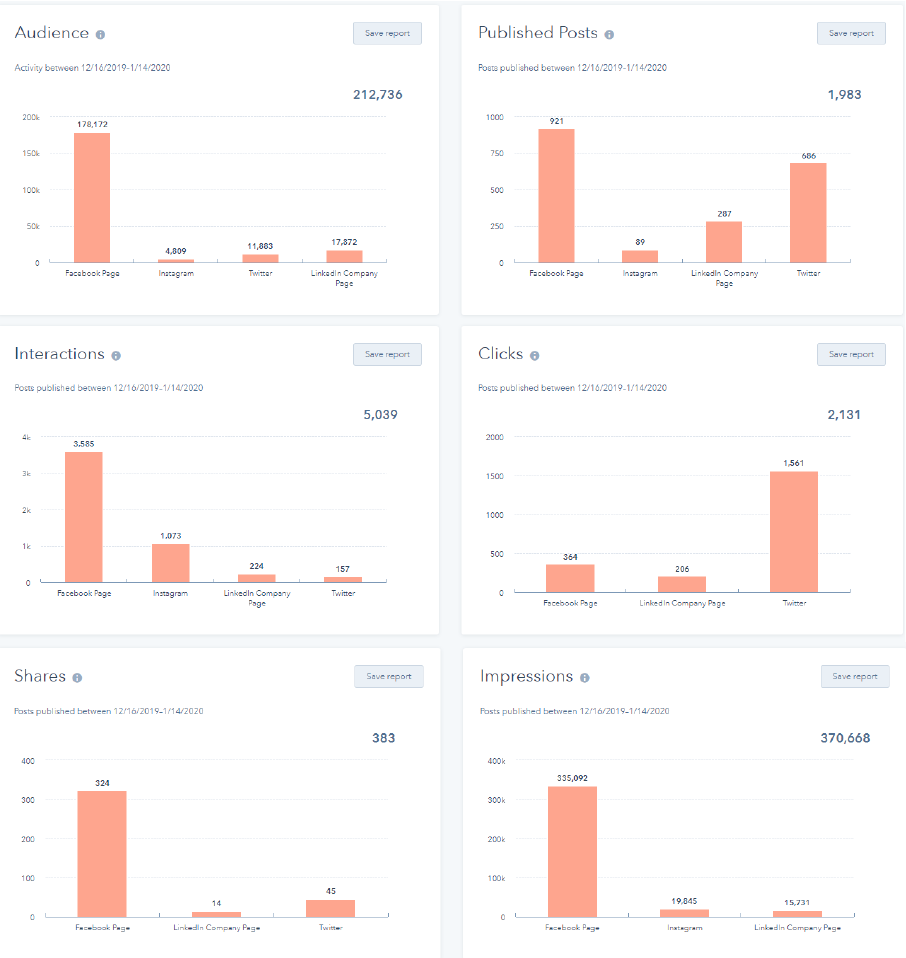
HubSpot also offers reports that showcase how many people you’re reaching, as well as how many leads you’re generating as a result:

You can also take a look at which posts have performed the best in terms of different metrics like interactions and shares:

Tracking Text Message Performance Using Marketing Automation for Education
Like social media, SMS isn’t necessarily a common marketing automation function. But considering that text messages have a 98% open rate, and a 209% higher response rate than email, social media, and phone calls, you’re likely to see more and more marketing automation software adopt SMS features in the years to come.
HEM’s customized Mautic platform, for instance, allows you to create automated SMS campaigns, track how many are texts are sent, and monitor their performance.
Example: This Mautic SMS campaign report allows you to see the total number of texts sent, as well as who they are sent to, for easy follow-up. If you include links in your messages, the number of clicks will be shown in the ‘click counts’ menu.
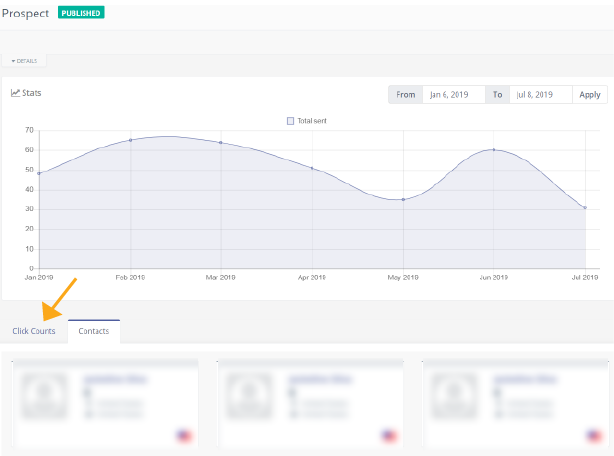
Select platforms may also offer SMS data that is comparable to most marketing automation email reports.
Example: With the SMSZap integration, HubSpot users can create and monitor text campaigns for maximum success.
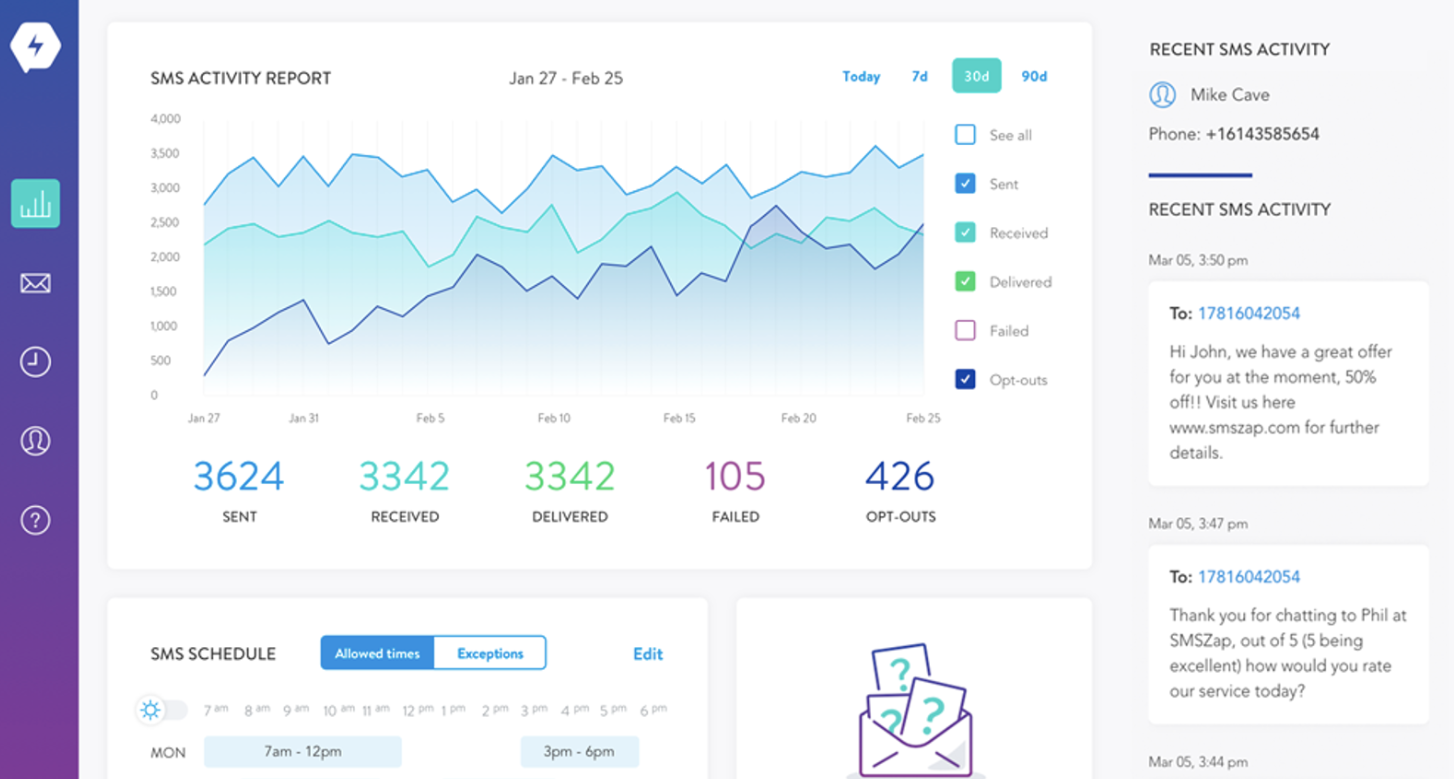
Source: HubSpot
Other metrics like open rate, link clicks, and response rate are helpful SMS marketing automation measurements you may want to pay attention to.
Conversion Metrics in Marketing Automation for Schools
Measuring your recruitment efforts by channel allows you to optimize each component of your digital marketing strategy – but what impact do these individual elements have on your overall conversion numbers? Marketing automation analytics can help schools connect the dots between each of their marketing methods. That way, your school can clearly see how each channel contributes to the number of leads you generate and the amount of inquiries and applications you receive.
Many marketing automation platforms offer a variety of reports of this sort, with some analyzing which channels your leads came from, others assessing your lead quality, and several showing you how many leads you have in each stage of the admissions journey.
Example: Here are two reports, on two different platforms, that display lead source.
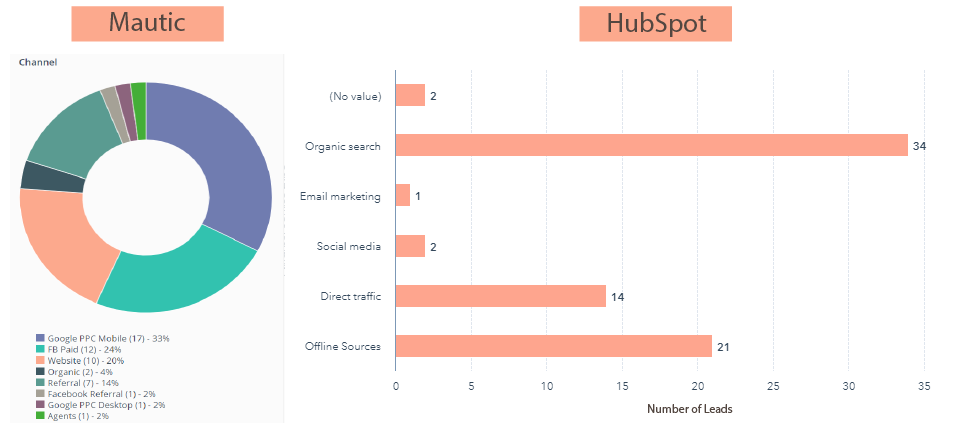
If you want to know a little bit more about who these leads are, some marketing automation for higher education platforms offer extra detail.
Example: You can learn where your prospects are from, how viable a prospect they are, and what type of request they made through Mautic.

Keep in mind that not all marketing automation programs will offer these reports, as many of them technically fall into the customer relationship management (CRM) domain since they have more to do with the contacts in your database than your individual digital marketing channels. However, the line between MA and CRM is often blurred, meaning that many marketing automation programs offer CRM features.
Another dataset that may or may not be included in your marketing automation software is reports related to ROI, cost per prospect, or other stats that involve dollars and cents.
Example: This report from Zoho CRM provides a detailed overview of how much is being spent and how many deals, leads, and revenue the company is getting as a result. Despite the sales-oriented appearance of this dashboard, this sort of report can also be tailored to the needs of schools.
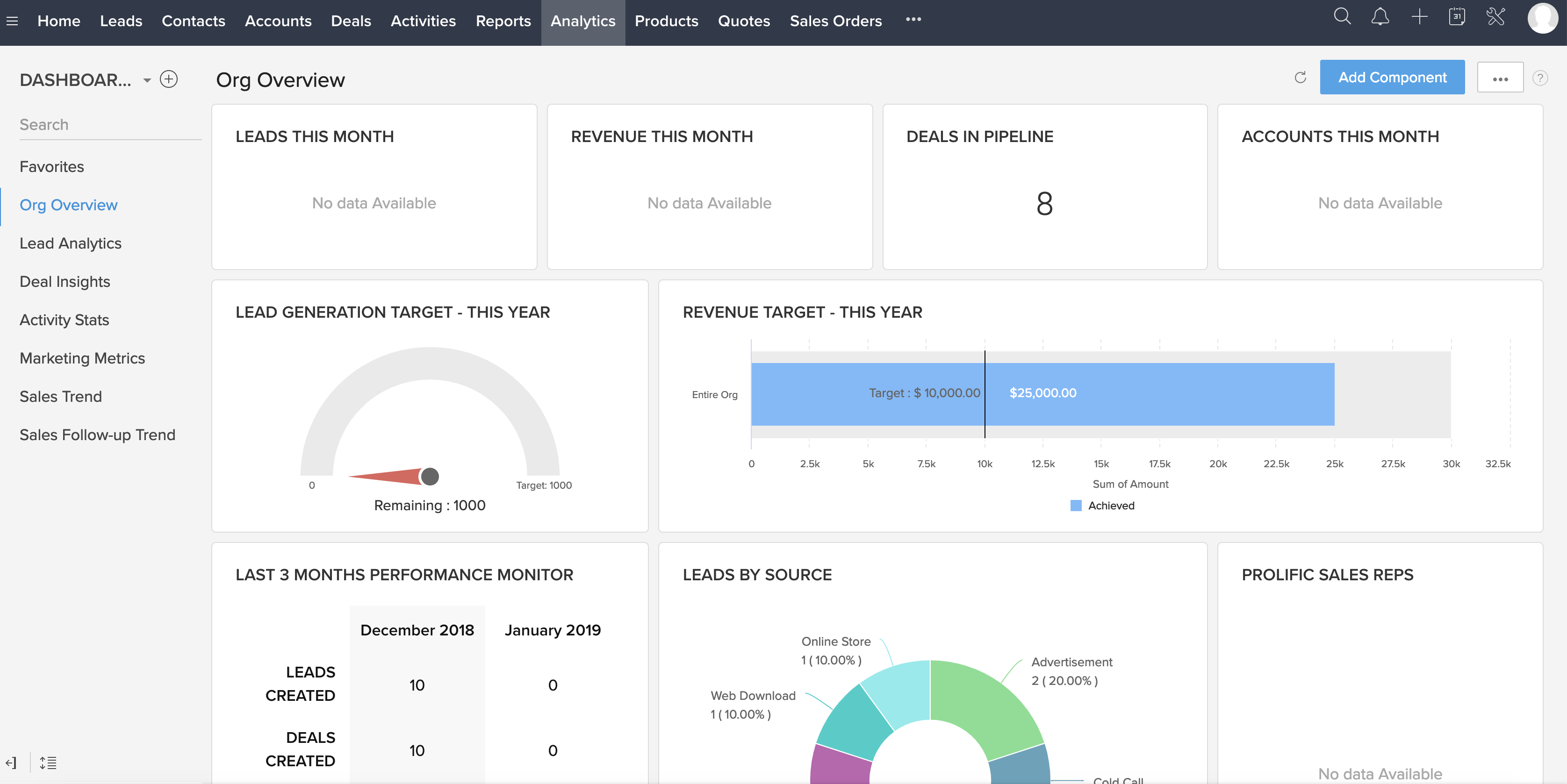
Source: GetApp
All in all, marketing automation reports allow you to analyze your various recruitment methods from an up-close lens as well as a bird’s-eye view. Narrowing in on the micro-details of each campaign allows you to improve over time, and assessing the overall impact of these efforts ensures that you’re inching closer to your school’s enrollment targets. Together, this data gives schools the intel they need to create a successful student recruitment strategy that continuously evolves and exceeds expectations.






